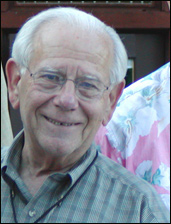Milton Nichaman, MD, ScD
Born: 1931

Milt Nichaman’s first United States Public Health Service (USPHS) assignment was in Charleston, SC, working on racial differences in the Evans County and Charleston studies. His PhD work in lipids in the 1960s was at the University of Pittsburgh with Bob Olson, the great diet-heart “Naysayer.” After his graduate work, the USPHS assigned him to direct its San Francisco cardiovascular disease (CVD) field station at Seal Beach. He was later involved with the Coronary Drug Project and helped plan and direct the Honolulu and NIHONSAN Heart Studies.
Later, Nichaman moved to a position as Director of Nutrition at Centers for Disease Control (CDC) and did international nutritional surveys, “from Nepal to Egypt, Viet Nam, South America,” developing techniques for a quick field diagnosis of malnutrition. He developed the data collection system from the WIC program for monitoring trends in nutritional problems in youth.
He comments on the dream of geneticists that they will be able to tailor individual diets and avoid public dietary guidelines: “It’s absolutely horrible and what worries me is that the idea that there’s . . . personal responsibility here, there’s no communal responsibility or social responsibility! But they are promising the world and I think they’re going to flop. Geneticists have the answers to all of it even those that pay lip service to genetic-environmental interactions really believe that genetics is the real powerful thing. That’s what they believe.”
After Congress ended the Heart Disease Control Program in 1980, Nichaman left the USPHS and moved to Reuel Stallones’ program in Epidemiology at the University of Texas at Houston. He observed and deplored the move from investigator-initiated studies and trials to greater NIH control and the growing idea and use of “nutriceuticals.”
In retirement he remains centrally involved in the cultural role of diet and physical activity in heart disease prevention. (SF/HB)
Sources
Oral history interview with Henry Blackburn, July 15, 2002.